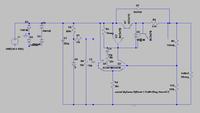jx_ben
Newbie level 5

The project we are asked to deliver is to build a liner voltage regulator without opamp, only use transistors, diodes, and zener diodes. The input is a sine wave with peak values as 7 to 13v,and output is lower than 5v. how to build this regulator?


